Ultraviolet is an unusual restaurant in many ways. It was opened in May 2012 by French chef Paul Pairet, who also runs Mr and Mrs Bund and the Chop Chop Club in Shanghai. Mr Pairet had worked in Paris, Istanbul and Hong Kong before moving to Shanghai, previously opening a restaurant called Jade on 36 in the city back in 2005. He is assisted by head chef Greg Robinson, an American who started cooking in Florida and moved to China twelve years ago, and has been working with Paul Pairet ever since at his various restaurants here. Ultraviolet is as much a theatrical experience as a dinner, each service being restricted to just ten diners, with thirty staff attending to them each night, including a dozen or so chefs. The restaurant was awarded two Michelin stars in the inaugural 2017 Shanghai guide, and promoted to three stars in the 2018 guide. An evening at Ultraviolet is very different from a regular dinner, so if you are planning to come here and like surprises then I suggest that you stop reading here and skip to the concluding two paragraphs. You should also avoid any other reviews of the restaurant. As they say in film reviews, spoilers now follow.
Your evening begins at 6:30 p.m. at the bar of Mr and Mrs Bund, which is on the sixth floor of the building 18 on the Bund. This is easy to spot since the same building houses an Atelier Robuchon tea shop at ground level. We began with a glass of Normandy cider (Domaine Dupont Ciore Reserve 2015, a cider matured in oak casks for six months, the barrels having previously held calvados, since you ask), and once the ten guests were assembled we were given our first canapé, a modern version of a French onion soup. This was served in a large soup tureen, but inside was a little spoon containing a squid ink-coloured shell holding a tartlet of cheese with a filling of beef broth and caramelised onion with calvados and black truffle. This was gorgeous, the aromatic truffle flavour coming through strongly, the sweetness of the onion going well with the richness of the cheese and beef (18/20).
This was merely a taster of what is to come, as the party was now led downstairs to a waiting minivan, where we were whisked away to the secret location of Ultraviolet itself. This was far from a flashy location, an industrial looking area a fifteen-minute drive away from the glitz of the Bund. Arriving in an enclosed car park, we were led to a room that looked like a cargo lift. Dramatic music suddenly played, and the screen doors opened into the restaurant itself. We were shown a basket containing some abalones, which were to feature in the first course, and along a corridor was the seemingly plain rectangular dining room with a communal central table and blank walls. At every place setting each diner’s name was projected from overhead lights on to the table, like paper place settings at a posh dinner party. A taste of the theatre to come was given by a door at one end of the room now opening briefly to reveal a chef behind a large cauldron with flames spouting from it. The door swiftly closed, retaining the secrets within.
The walls on either side of the table were now revealed to be projection screens, as an image appeared declaring “Act 1: The Sea”. At this point the tabletop projection was replaced with an ocean floor image. The abalone was flavoured with dill and served simply with a yuzu dressing and a little finger lime to add acidity. Abalone is a tricky ingredient, often resolutely rubbery, and indeed until I ate it in Japan I didn’t realise that it wasn’t necessary for abalone to taste like chewing a tyre. I am not sure of the cooking process applied here, but whatever it was worked, as the abalone here was as tender as you could wish and had excellent flavour, the dash of lime being all it needed (18/20). This was accompanied by a glass of Francoise Bedel L’Ame de la Terre Extra Brut Millesime 2005 champagne.
The next dish was a red Spanish prawn cooked in its own juices, served with what appeared to be its shell. This was in fact a cleverly shaped very thin tuile tasting of lime and perhaps liquorice, essentially acting as a condiment to the shellfish. The prawn was superb, having terrific flavour and beautiful cooked. Ingredients of this quality do not need much in the way of distraction (19/20). This came with a glass of the lovely E. Guigal Condrieu 2013, the aromatic Viognier grape a good match for the shellfish.
For the next dish the wall video projection changed to one of the open sea. The dish was to be centred around a scallop from Dalian in Liaoning province in the north east of China, paired with sea urchin, oyster leaf and seaweed, covered by an edible shell that looked like a meringue but was apparently made using frozen lemon and seawater. The scallop was lightly cooked and had reasonable flavour, but the dressing with it seemed to me a bit too sharp (barely 16/20). This came with a glass of Barco Del Corneta 2014 from Castillo Y Leon.
For the penultimate dish of the seafood section of the menu, the wall video projected a bonfire. A vase was brought to the middle of the table and something within it was lit, so that a gentle smell of smoke lingered in the air. This foreshadowed a plate of charcoal grilled oyster, grilled foie gras and grilled cuttlefish skin, along with a red wine sauce. This was another successful dish, the liver flavour deep and the texture of the foie gras silky smooth, its rich flavour contrasting with the brininess of the oyster, the cuttlefish skin bringing an extra texture. The red wine sauce was well reduced and rich, and a little piece of bread was provided to mop it up, which was a nice touch (18/20). With this dish came a glass of Bodegas El Nido Clio 2015.
The last dish in the seafood section was a kind of palate cleanser, a lobster infusion with herbs cooked in a little burner. This was a dashi broth infused with coriander, spring onions and Chinese chives in addition to the shellfish. This may not sound thrilling but even this had excellent, deep flavour, the herbs and shellfish combining flavours well, the lobster flavour not overwhelmed by the aromatics (18/20).
At this stage there was a transition to “Act 2” of the meal, ”The Land”. The table was laid with AstroTurf to signify a grassy field, the video projection showed idyllic fields and, just in case you had missed these cues, the next course arrived in a picnic basket. A grilled bread roll was cut open ready for a sandwich filling, pre-filled with some avocado. In the basket was bacon and grilled tomato, and a little tube contained quite mild mustard. Finally on the side was a little glass of tomato water flavoured with basil. Diners were then directed to assemble their sandwich. This was a simple but very well balanced dish, the proportions good, the bacon of very high quality and the bread excellent. This may just be a sandwich, but it was a very fine sandwich. As this was just assembly rather than cooking it doesn’t seem right to score it, but it was quite a fun way to change the flow of the meal.
Next was lamb (from Mongolia), the lamb tongue covered with garlic and parsley sauce and herb salad. The herbs were very aromatic and the meat, presumably slow cooked for a long time, was tender and had good flavour, the distinctive taste of garlic adding a nice flavour note (17/20). The wine pairing for this course was Thierry Germain Domaine Des Roches Neuves 2015.
The video walls changed to a display of tree roots, and we all know what grows at the base of oak tree roots: truffles. In a dome to encase some smoke came a thick slab of toasted bread covered with a layer of black truffle and topped with meunière foam, essentially a butter sauce foam. This was absolutely superb, the truffles aromatic, the butter foam rich and pleasing, and even the toasted bread was superb. The combination tasted fantastic (20/20). Apparently this is the signature dish of the chef, and a very fine signature it is to have. With this came a glass of Domaine Jean-Marc Boillot Bourgogne Blanc 2011, which also covered the next course.
The video wall now changed to a woodland scene and a large display of shiitake mushrooms was brought to the table. Slices of Paris mushrooms (button mushrooms to the English), “golden sweet” mushrooms and shiitake mushrooms were accompanied by mushroom jelly and an aerated mushroom crisp. Additionally there were further slices of shiitake mushrooms with olive oil and lamb jus. The aerated mushroom crisp tasted lovely as well as being pretty, and this was a pleasing combination of mushroom flavours and textures (18/20).
Guests were then invited to leave the table and go to an adjoining bar for an interlude in the meal. At the bar there was a “cigar, coffee and cognac”, which was not quite what it appeared to be. The cigar butt was made from a skin of cognac and filled with foie gras, the “ash” being powder of chocolate and truffle. The cup of “coffee” was really button mushroom soup, though the cognac was real enough, Martell Cordon Bleu Petit Carajillo. The foie gras nibble had lovely liver flavour, enhanced by the truffle, and the mushroom soup had really deep flavour (18/20). After a short break the guests were invited back to the dining room to enjoy the third act of the meal, entitled “Asia”.
The video walls now showed paper lanterns floating in the air. The hostess appeared with a large beeswax block, which she cut open to reveal black cod that had been cooked with lavender, oregano, tarragon and sage leaves. She sliced the fish ceremoniously into portions and this was plated along with steamed spinach, asparagus, almond, ginger and a pair of sauces: tahini sauce and black sesame sauce. Black cod, incidentally, is not cod at all, but sablefish, whose high fat content gives it a buttery texture, which is why it is also known as butterfish. The fish had a suitably velvety texture but it was greatly enhanced by the excellent sauces, whose quite strong flavours really lifted the inherently mild tasting sablefish. I was also impressed by the quality of the spinach in particular, which was unusually good (18/20). This was accompanied by a glass of Domaine Matrot Meursault 2015.
The theme of the next dish was Singapore, which is noted for its hawker stalls selling cheap but tasty snacks. To reflect this, a door in the wall opened and a little hawker stall appeared. The diners were encouraged to wander over and collect their next dish, beef with pepper sauce. In this case the beef was rather upmarket, Australian wagyu of the highest marbling grade (grade 12 in the Japanese beef marbling scale) with a slightly spicy pepper sauce, served with a little heap of rice along with lettuce and a piece of melon. As condiments there were jars of fried garlic and fried shallots as well as a refill of the pepper sauce. The beef was very tender, as one would expect from such a fatty specimen, and its flavour was nicely lifted by the spice of the pepper sauce and the condiments (17/20). This came with a glass of beer.
An artistic reference was the inspiration of the next dish, another palate cleanser. In 1929 the Belgian surrealist artist Rene Magritte painted a picture called “The Treachery of Images” showing a picture of a pipe with a text label that translates to “This is not a pipe”. The point being made was that this was just an image of a pipe, not an actual pipe. At our table a teapot and a cup appeared. The contents of the teapot were poured into the saucer, which turned out to be a frozen and edible cup, tasting of lapsang souchon tea, so not a cup at all. All very arty.
This was followed by the final savoury dish, Beijing cola duck. We were served a couple of little pieces of crisp duck skin along with a cherry and truffle salad. If you eat Peking duck in Beijing you will be offered a little sugar to dip it in, which is a useful idea to offset the flavour of the skin, and that would have been good here in my view. The skin was quite crisp, albeit not of the level of the remarkable duck at Made in China in Beijing, but a touch of sweetness would have been nice, especially given the acidity of the cherry (barely 16/20). To drink with this we had a glass of plum and rice Asia Libre.
Now it was time for the dessert phase of the meal, the video wall changing to pictures of doughnuts. The pre-dessert was a Grand Marnier slush in a glass with a flower infusion, the texture excellent (17/20). The “lunar mushroom” dessert had a lattice tuile top like a mushroom cap but flavoured with nutmeg, placed over a cylinder of semi dried bamboo filled with Grand Marnier sorbet flavoured with Yakult, a probiotic dairy product invented in Japan way back in 1935. The sorbet was refreshing and had good orange flavour (16/20).
Next a glass of Willet Kentucky bourbon was served, with what appeared to be an ice cube actually being a candied aubergine. On the side was a paper-thin crisp with hazelnut and praline parfait. I was less taken with this, the praline nice but the candied aubergine an odd idea (14/20). Much better was “Melba”, a disc of frozen peach revealing an excellent candied raspberry. The raspberry has lovely flavour and the peach flavour came through well (18/20). The last dessert seemed to me a bit of an anticlimax, a peanut tart with popcorn, which was pleasant but hardly thrilling (16/20 at best). This dessert came with a glass of Fontaine Sauternes 2010. This rather undistinguished Sauternes seemed a rather odd wine to finish with, given all the fabulous dessert wines that the world has to offer. It seemed out of character with the generally very high quality wines that had been served earlier, and given the price of this meal could surely be upgraded.
Even now, after twenty courses, the evening still had a little twist to come. The video walls showed a speeded up instruction video for making a mango dessert, complete with dill syrup and liquorice jelly. The bemused and, by the time, fairly inebriated guests were invited to try and make a version of this in three minutes, given the pre-made components. These were then taken to the kitchen to be judged in the kitchen by the chefs, the winner (a French guest won) presented with a cap as a prize. At this point a final beverage appeared, a glass of Duval Leroy Blanc de Blancs 2006 champagne. This last section was all quite light hearted and was certainly a fun way to end the evening. At this point the party breaks up and you are either taken back to the original meeting spot in the Bund or the staff will order a taxi for you.
The overall experience is extremely immersive. As well as a soundtrack playing throughout the evening, changing with each course, at certain moments various faint scents wafted into the room to reflect the theme of the particular course, so all the senses are engaged. Service was fabulous, our English speaking host Kim charming and happy to answer any question. The team of waiters circled around in different set patterns as they delivered each course, one waiter per diner, and delivering each dish in a synchronised flourish. It felt like a ballet, such was the level of precise movement. The meal flowed well and the pace of dishes was good. I just wish the desserts had maintained the standard of the savoury courses.
The bill for the evening? Well, all those staff and effects don’t come cheap. The price during weekdays including the wine pairing is CNY 4,000 (£457), and on Fridays and Saturdays this rises to CNY 8888 (£1015) albeit with finer wines, these prices being before (optional) service. Hence if you go during the week and leave a 10% tip then you will pay £503 per person. Although the drinks and food are bundled together, I calculate the average retail price of the bottles of wine poured this to be £42, to give you some idea of the level of drinks being served, and there was generosity in the measures poured. Now £503 is, by any standards, a chunk of change for a meal, but is no worse than you would pay at a top Paris restaurant. Objectively this is still a heck of lot of money and hard to justify, but such was the sheer enjoyment of the evening that I didn’t begrudge a penny of it.
On the spectrum of restaurants, Ultraviolet is very much at the experimental, modernist end of things, but the theatre of the evening was extremely well put together, and above all did not distract from the food, which ranged from very good to superb. The amount of work that must have gone into designing the whole experience is mind boggling, and the four and a half hour experience positively whizzed by, such was the array of elements to experience and the slick choreography of the evening. This was a delightful experience, and the quality of the food stands very much on its own feet: if you had the same meal in a normal restaurant setting, it would still taste great. However this is a fully integrated experience of food and culinary theatre, and a brilliant one at that.






































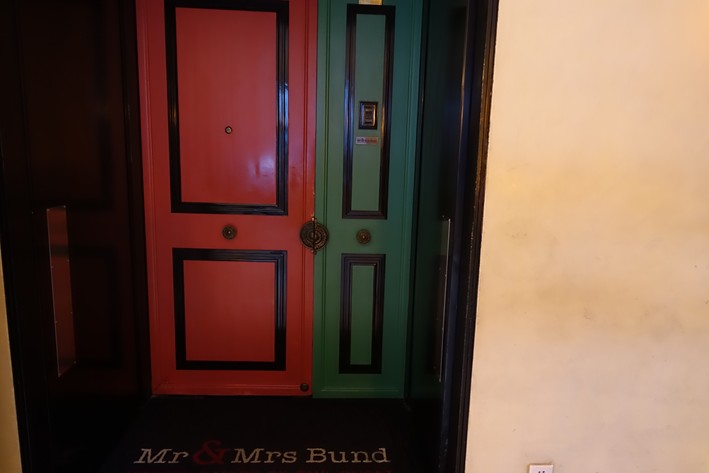

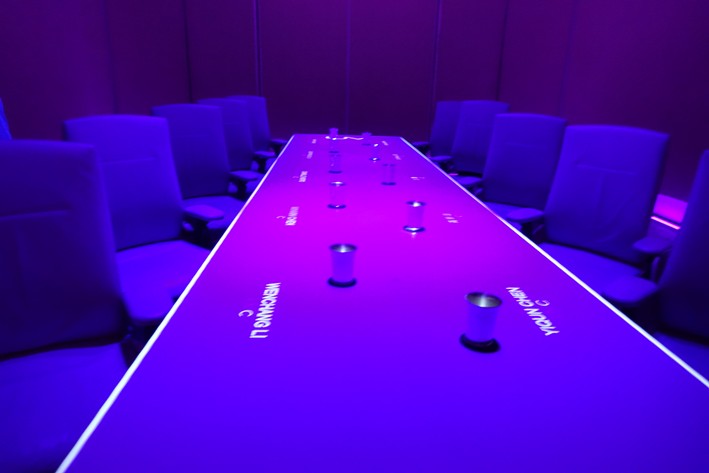

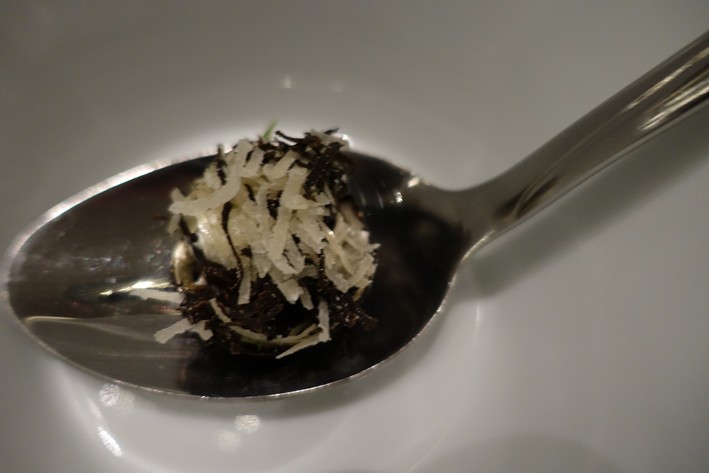
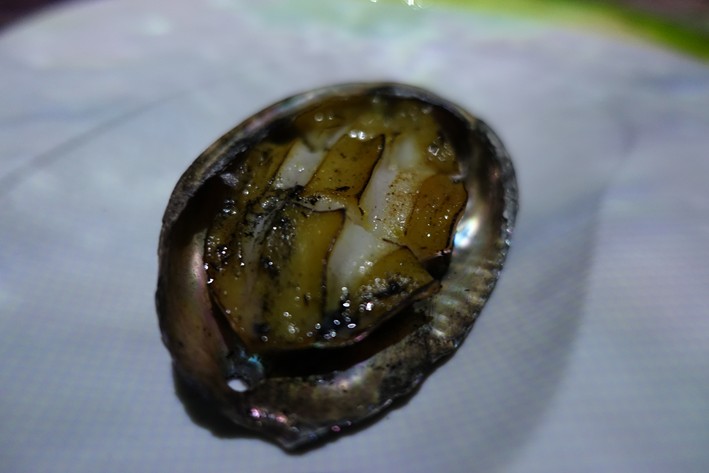
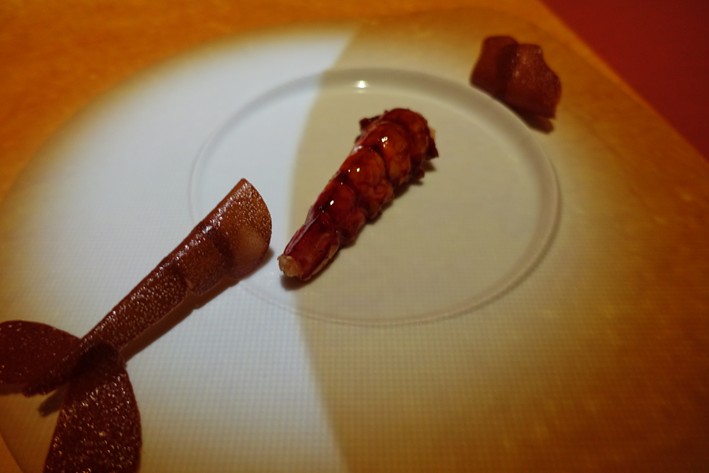
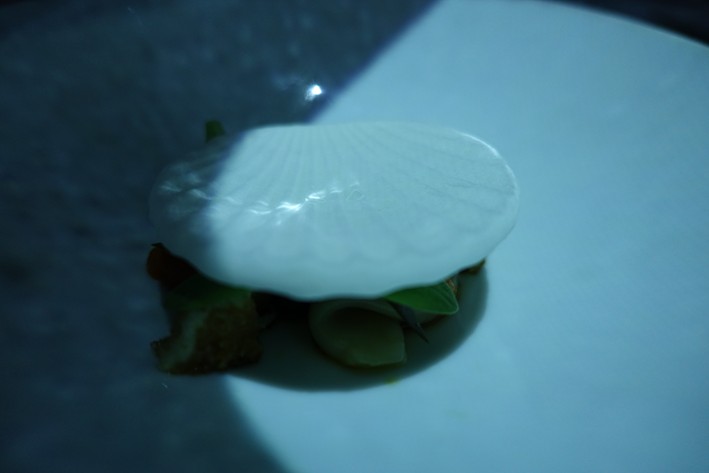
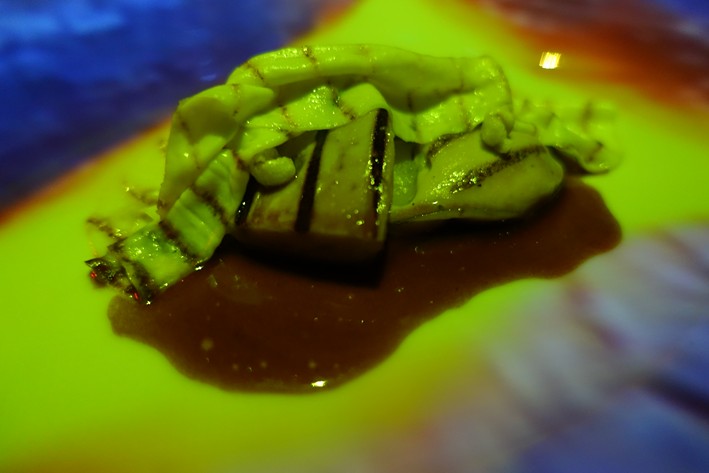
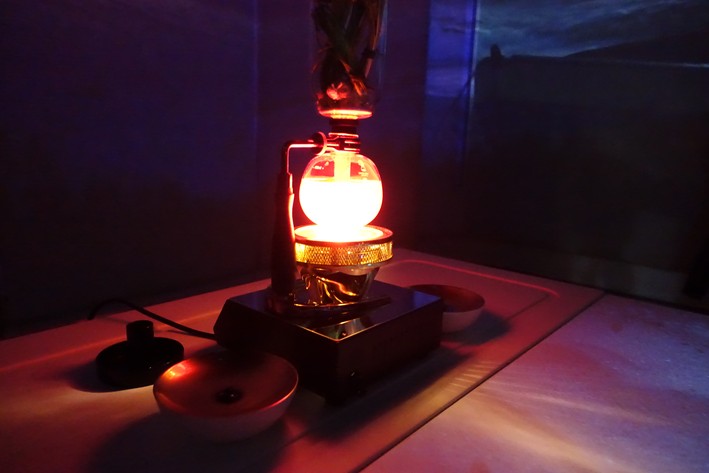
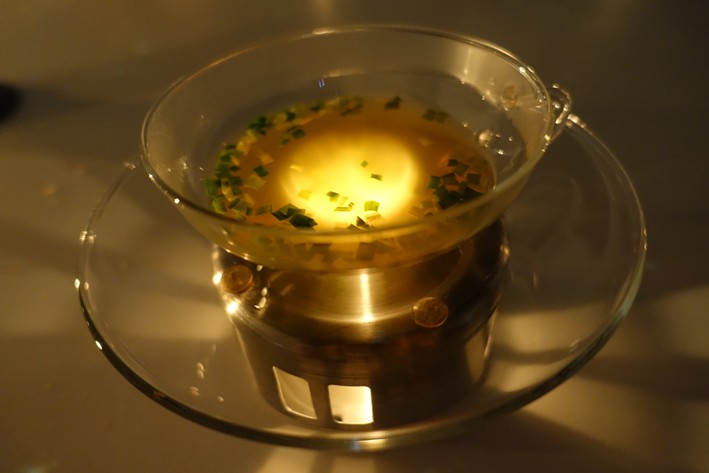
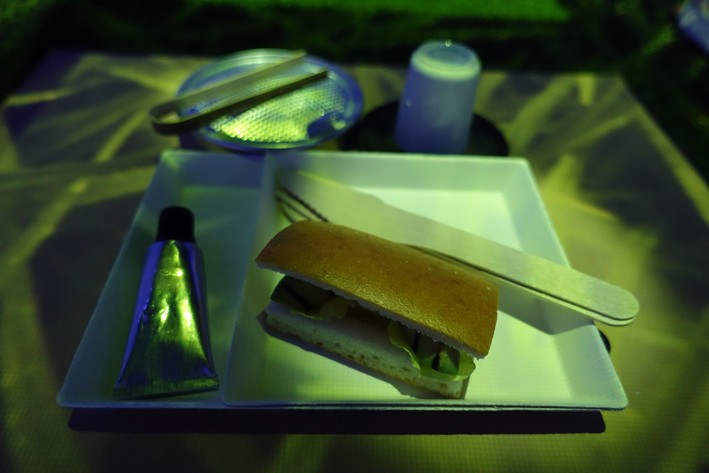
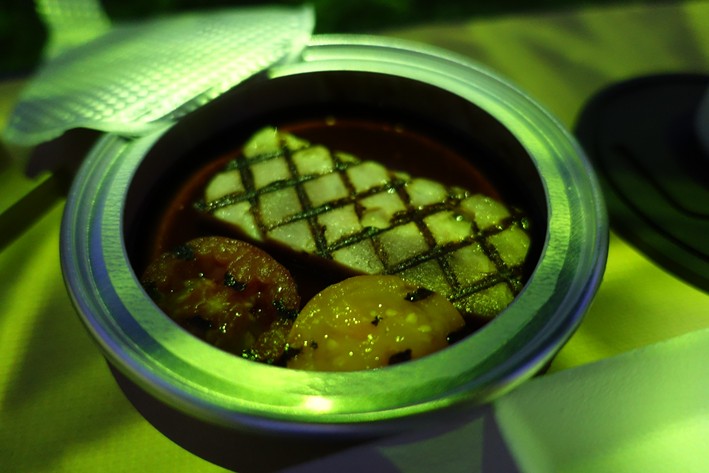
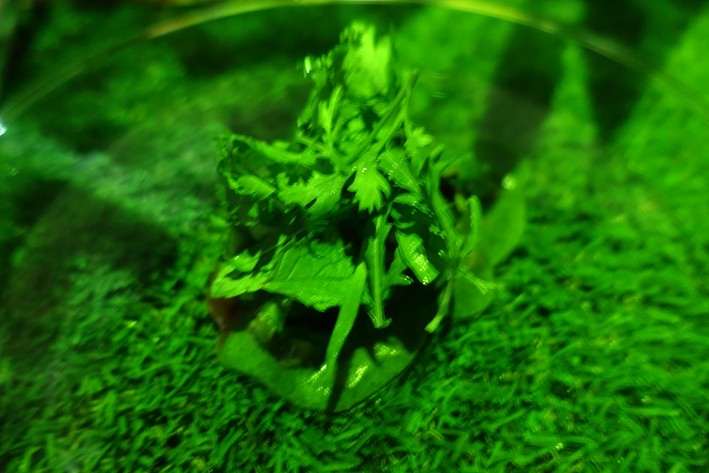

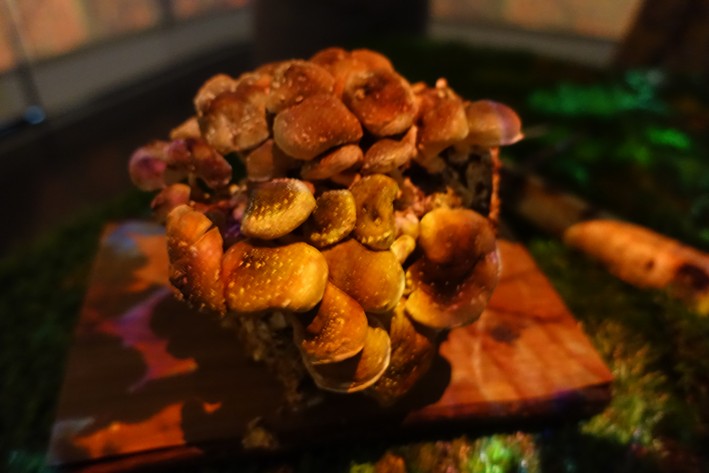
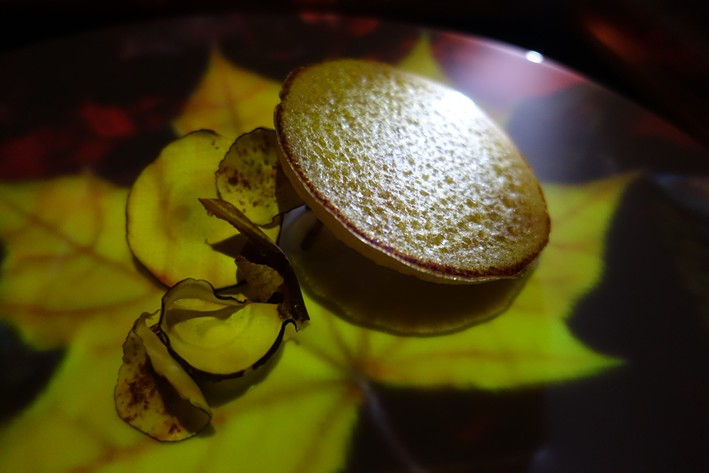

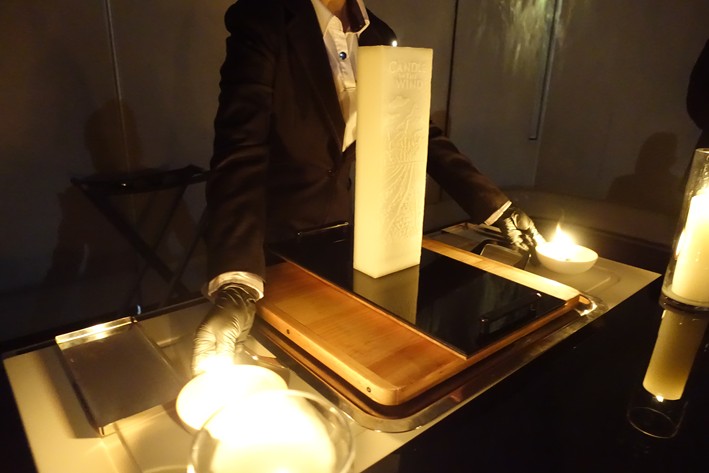

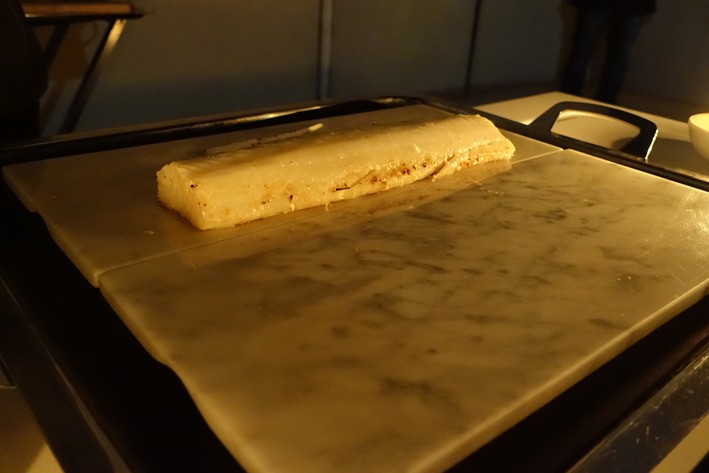

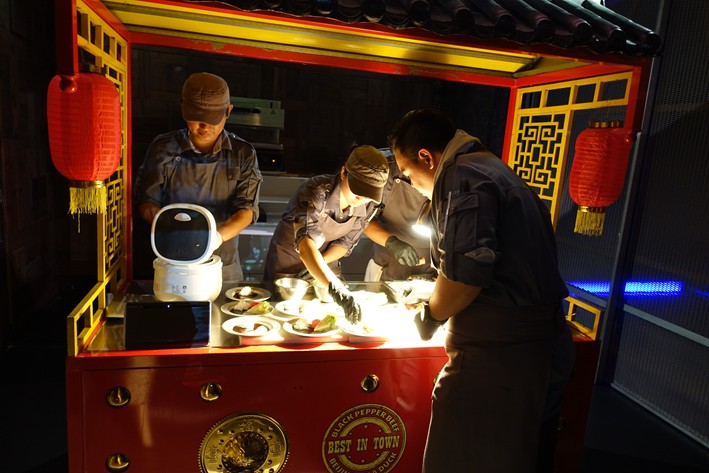
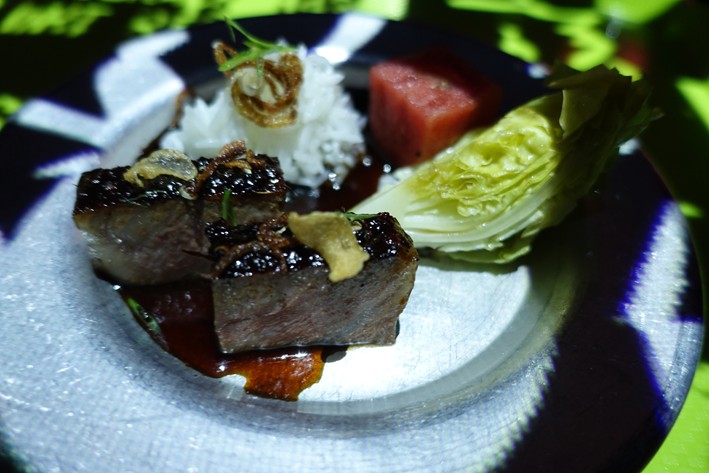

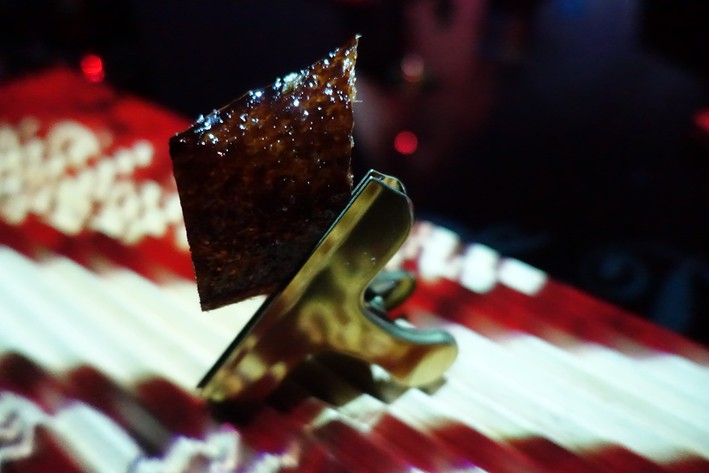
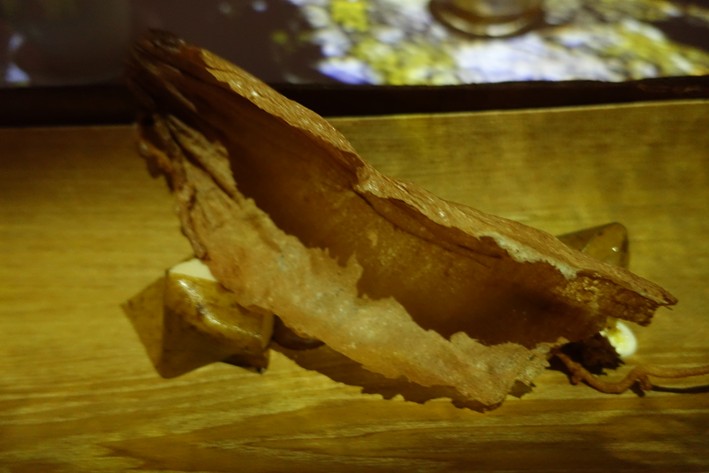
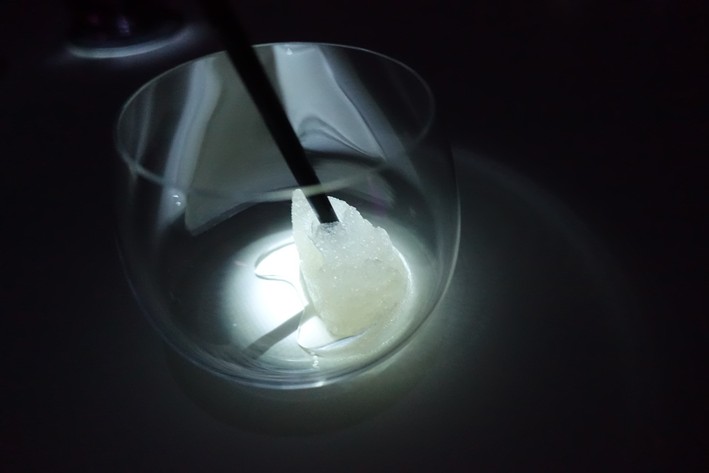

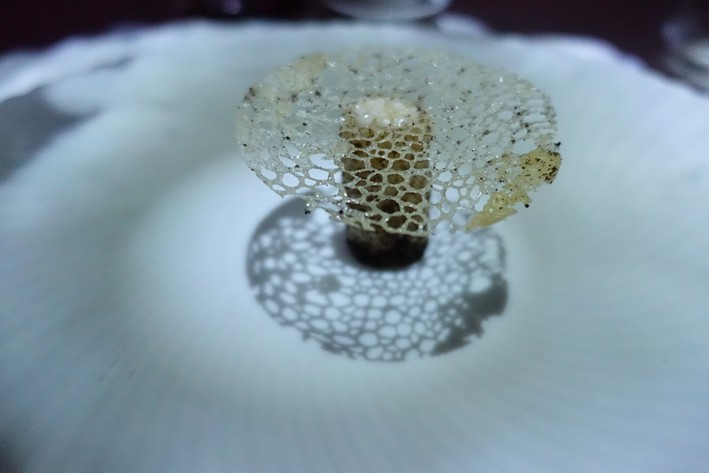

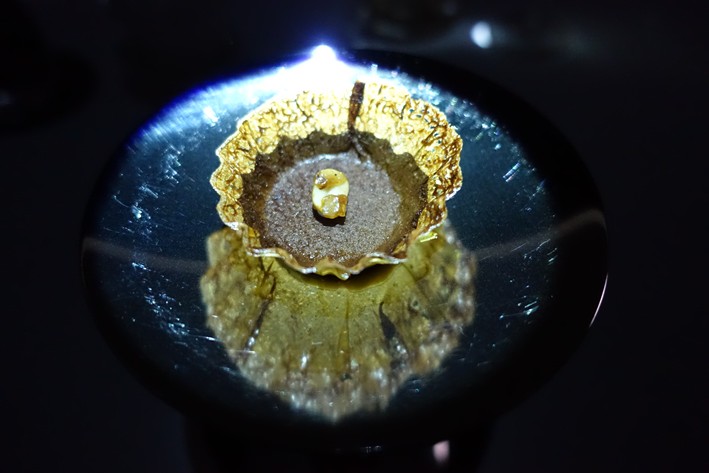
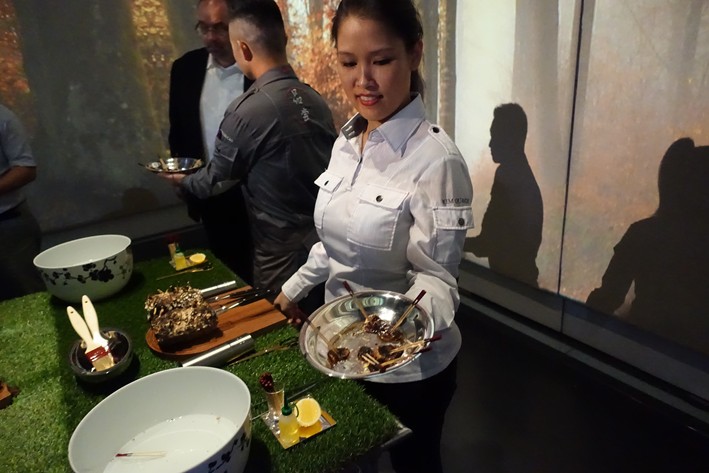
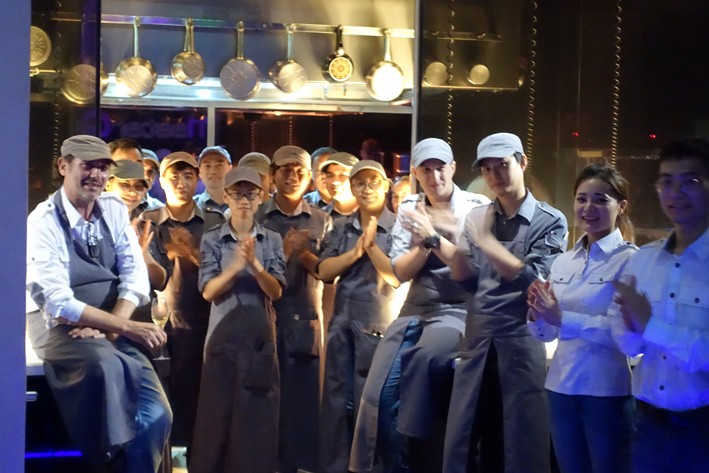

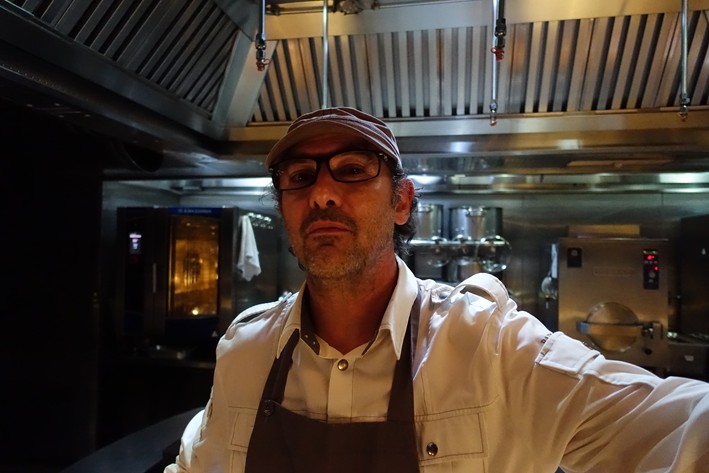
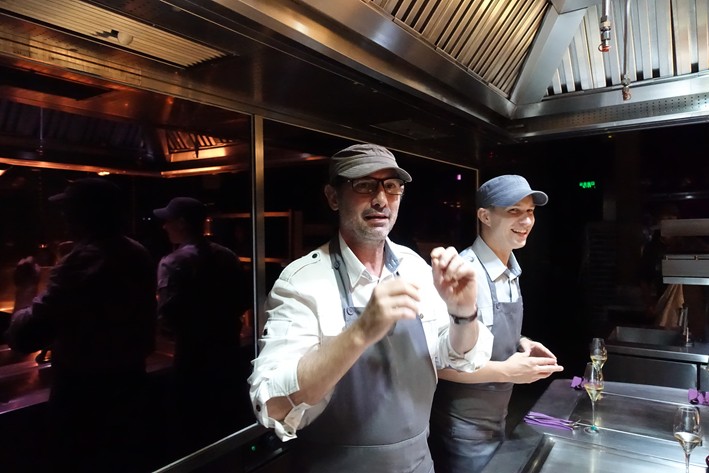

Add a comment
Thank you for submitting your comment, this will be checked and added to the website very soon.
User comments